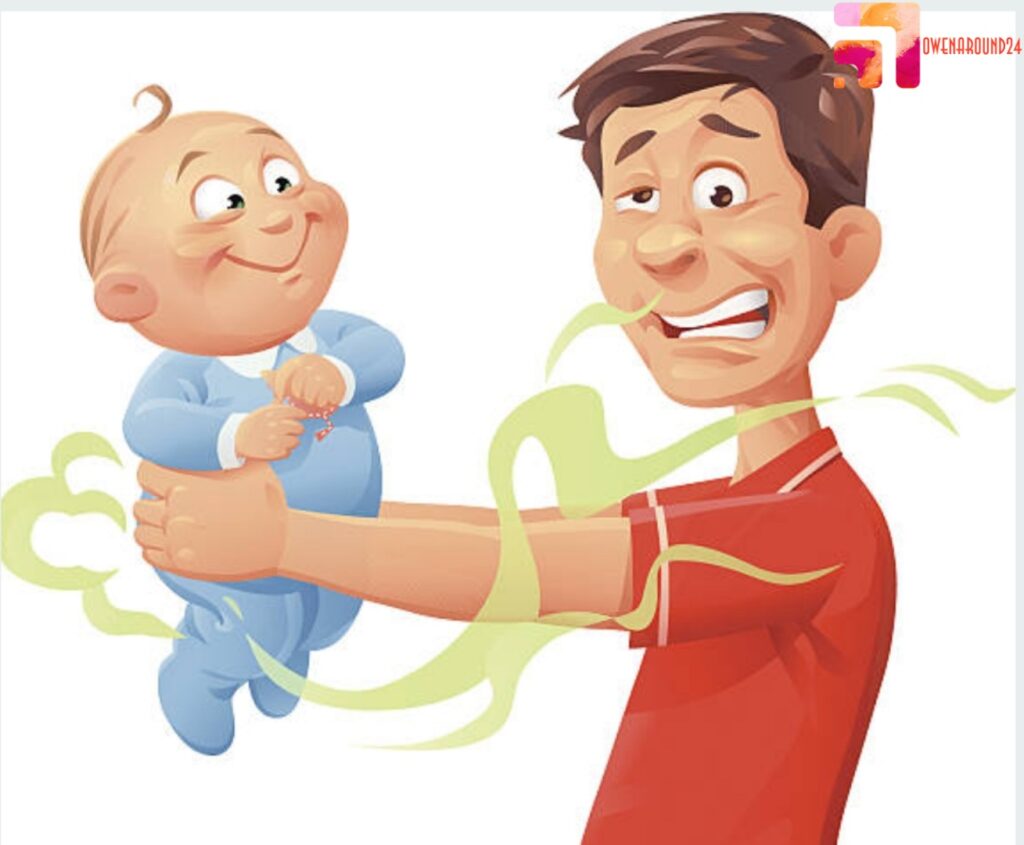
It is important to monitor your newborn’s diapers, because newborns’ droppings say a lot about their health and whether they are getting enough milk or not, and soiled nappies ensure that your newborn doesn’t get dehydrated or constipated, so mothers are usually interested in noticing the color of their infants’ stools. Yellow, soft stools are ideally normal for children who are breastfed, however, there are many colors that are also normal for a child’s stool, such as green stools.
The number of times the baby defecates according to his age. In general, if you’re concerned about the color or consistency of your baby’s stool, contact your doctor.
IS GREEN STOOL COLOR IN A CHILD DANGEROUS?
Mothers usually notice that the baby’s stool is green in the first weeks after birth, which is normal at this stage. His stool is green and sticky or mucous permanently and frequently, accompanied by a rash in the infant , here you should pay attention and consult a doctor to find out the main cause and avoid it.
During the second to fourth day after birth, the color of stool is green, and this is the normal color for infants at this stage, after the first three days, if you are breastfeeding, it will turn yellow to green (light mustard) and you will notice some grains in its texture and a slight smell If you are breast-feeding your baby, his stools will be dark brown or light green in color.
The green color means that stool is passing through the digestive tract more quickly than usual, so if your infant’s stool continues, and is accompanied by sticky and mucus, it is often the result of one of the following reasons:
- Your child receives only the light milk that comes down at the beginning of the feeding, which is transparent milk that contains a high amount of lactose compared to the fat milk that comes down at the end of the feeding, and it is white, saturated with fat and nutritious for the baby, and because the milk that comes down at the beginning of the feeding is usually Mild, the infant may feel hungry quickly, and cry for feeding after a short period, which affects the stool, making it liquid and green in color.
- You are taking certain medications, such as antibiotics, iron, or nutritional supplements that contain a group of vitamins.
- Eating certain foods that cause your child allergies, or green foods in large quantities and constantly, such as: cauliflower, broccoli, spinach and molokhia, or spicy foods full of spices, or fruits that cause allergies such as bananas and strawberries. The child has an infection that causes him to have diarrhea, and here a rash may appear in the place of the diaper, and you should see a doctor.

WHEN SHOULD YOU GO TO THE DOCTOR?
Consult your pediatrician immediately if you notice the following in your baby’s nappy:
- Bloody or maroon-colored stools.
- Black stools after your baby has passed the meconium stage (usually after the fourth day).
- White or gray stools.
- The baby has more bowel movements every day than usual. Stools with a large amount of mucus or water.
THE NUMBER OF TIMES A BABY DEFECATES ACCORDING TO HIS AGE
The ideal number of stools for the infant is evidence of his health and fullness and the ability of the stomach to digest milk well, so always make sure of the number of stools, here is a guide to the number of times the infant stools:
Newborn stools (immediately after birth until the first day)
- In the case of breast-feeding: the stool is black (meconium), and your child may have a bowel movement once or twice during the first 48 hours of his life.
- In the case of artificial feeding: the stool is black and called (meconium), and your child may have a bowel movement once or twice during the first 48 hours of his life.
Baby stool in the first weeks (first six weeks)
- In the case of breastfeeding: The child defecates at least 3 times a day, and it is yellow or greenish liquid stools, and the number of stools may increase or decrease, but eventually becomes regular.
- In the case of artificial feeding: the child defecates at least 1-4 times a day, and the color of the stools is light brown or green, and after the first month, the number of stools decreases to once a day.
Baby stool after introducing solid food
- In the case of breastfeeding: The baby usually passes more stools after eating solid foods.
- In the case of artificial feeding : the child has a bowel movement from one to two times during the day.
Finally, we tried to answer the question “Is the baby’s green stool dangerous?” According to what we mentioned in the article, it is normal until the end of the first month at least, but if the green color, viscosity and fluidity continue in the infant’s stool, the doctor must be resorted to, to ensure that there is no infection in breastfeeding, or the presence of any bad bacteria in the stomach that cause this matter .